As an Amazon Associate I earn from qualifying purchases.
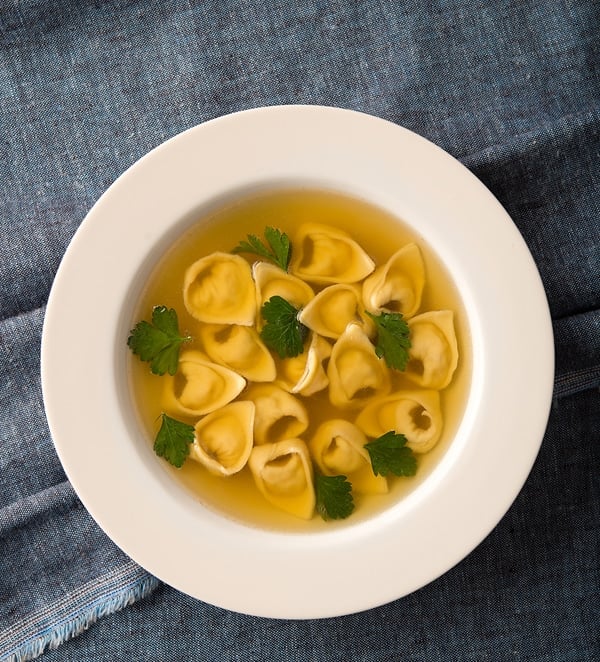
Pheasant stock is a foundational ingredient in any bird hunter’s kitchen. If you shoot pheasants, or really any animal, you ought to be making stock from its bones and spare bits.
This recipe for pheasant stock applies for all light-meat animals, and I will use it for wild turkey, quail, partridges, rabbits, squirrels and grouse. And of course you can use chicken.
Whether you’ve skinned or plucked your birds, roasted them whole or cut them into serving pieces, you will want to save the carcasses for making broth or stock. Why do this? Put simply, it will be the best “chicken broth” you’ve ever eaten. Everyone has a favorite way to make stock, but here are a few tips:
- Roast the carcasses at 400°F until they are a deep brown, at least 1 hour. Or, to make a light stock, simmer the carcasses and skim any froth that forms at the top of the water.
- Use more meat and carcasses than you might think; it makes the stock taste better. Only cover them by 1 or 2 inches of water.
- Never boil a stock. It should barely even simmer. I cook my stocks at around 170°F – the surface barely bubbles.
- Consider adding a pig’s foot, which you can buy at Asian or Latin markets. It adds a lot of collagen to the stock, which gives it body and heft.
- Cook the meat and bones until they fall apart, which takes several hours or even overnight. Only then do you add vegetables, herbs and spices. Cook vegetables for only 90 minutes to 2 hours.
- Strain your stock like this: Set a plain paper towel or cheesecloth in a fine-mesh strainer. Set the strainer over a large pot or bowl. Ladle the broth from the stockpot through this set-up into the bowl. This strains out debris and keeps the stock clear.
- Use your stock within a week or freeze it for up to a year. You can also pressure-can stock. Follow your canner’s directions for doing so, but the normal procedure is to pressure can for 25 minutes at 10 PSI.
Some other thoughts on adding this or that.
Always mirepoix, which consists of onions, celery and carrots. Chop them roughly.
I like a golden stock, so I don’t add tomato products. Adding some will turn the stock amber, which is nice, but in my world, where there’s always a lot of duck, goose or venison stock around, I find myself needing lighter stocks when I can get them.
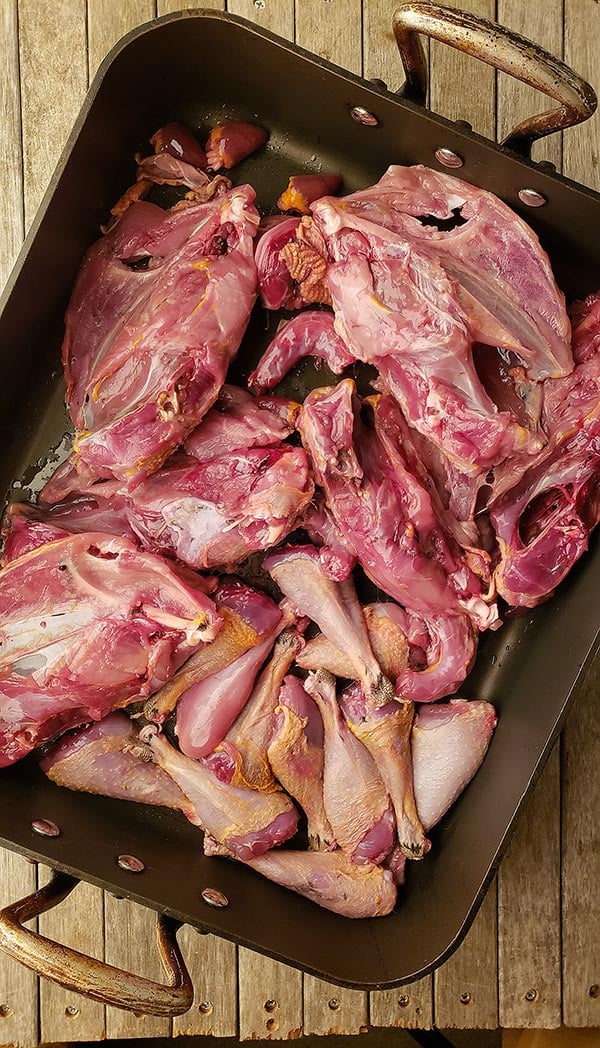
Parsnips are added a lot, but can add quite a lot of sweetness. If you like that, add a few. Fennel bulbs will do something similar. As do carrots, which I always add.
Spices and herbs. I have a set I typically like, which includes lots of bay leaves, thyme, cracked peppercorns, juniper berries when I have them, smashed garlic cloves, and maybe some lovage, if I happen to be growing it that year. Always the leaves from the celery, too.
If you want to go Asian, add a little soy sauce or miso, some sliced fresh ginger and a couple bunches of green onions.
One more thing: Want to be thrifty?
Do a second stock, called remouillage in French cooking. Simply ladle off all your normal stock, leaving, as I’d mentioned, maybe an inch’s worth of liquid at the bottom of the pot, then refill the pot with more cold water. Don’t go more than 1 inch above the level of the now heavily-cooked stuff in the pot, and let this simmer gently for another 4 to 8 hours.
Voila! Several more quarts of a nice base stock for cooking rice, beans, or as a soup base.
Pheasant Stock
Ingredients
- 6 pheasant carcasses, with hearts, gizzards, and drumsticks
- 3 tablespoons sunflower or other vegetable oil
- Salt
- 1 pig's foot (optional)
- 1 large white or yellow onion, chopped
- 3 carrots, chopped
- 4 celery stalks, chopped
- 4 smashed garlic cloves
- Stalks from 1 bunch parsley, chopped
- 4 bay leaves
- 2 teaspoons dried thyme
- 1 tablespoon cracked peppercorns
- 1 tablespoon crushed juniper berries (optional)
- 1 tablespoon lovage leaves (optional)
- 1 handful dried mushrooms, any kind (optional)
Instructions
- Set all the pheasant bits in a large roasting pan and turn the oven to 400F. Coat the pheasant bits in the oil and salt well. Roast in the oven for 1 hour, or until deeply browned.
- Get a large stockpot and add the pig's foot, if using. Fill it two-thirds of the way full with cold water. When the pheasant bits are browned, crush them up a bit and add to the stockpot. Pour some water into the roasting pan. Set the stockpot over medium heat.
- After a few minutes, the water in the roasting pan will loosen all the brown bits stuck to it. Use a wooden spoon to scrape everything up and pour all this into the stockpot. Bring the stock to a bare simmer -- you want it to barely shimmy, not bubble strongly -- halfway cover it and let this steep for as long as you can take it. I often will go 12 hours. You need to go at least 4 hours.
- When you are ready, stir in all the remaining ingredients and continue cooking gently for 90 minutes to 2 hours.
- To strain, set a paper towel in a strainer. Set the strainer over a large bowl or other container. Turn the heat off the stock and ladle it through the strainer. Leave the last inch or so of stock at the bottom, as it will be full of sediment. If your birds were fatty, you might need to change the paper towel once or twice.
- Taste the finished stock for salt and add it to taste. If you decide to reduce the stock further -- you can do so another few hours and it will set up like jello when cold -- do not add salt until you've taken the stock as far as you want it.
- Use within a week in the fridge, a year in the freezer, or 2 years when pressure canned.
Nutrition
Nutrition information is automatically calculated, so should only be used as an approximation.
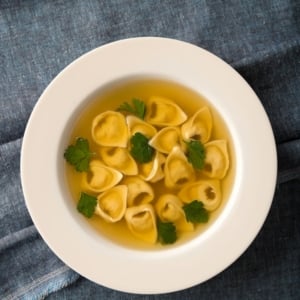
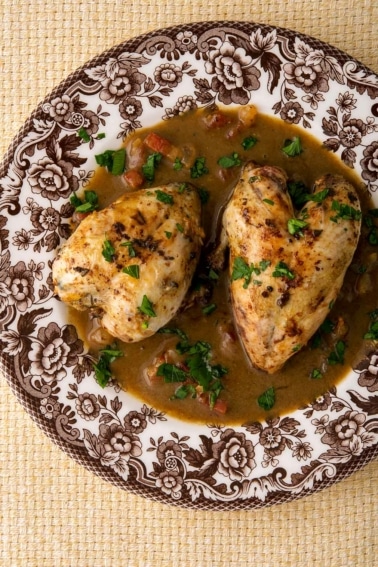
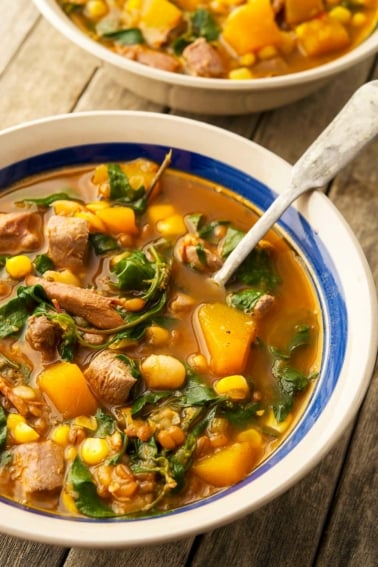
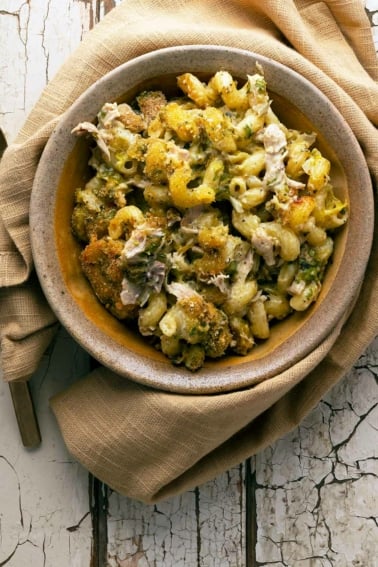
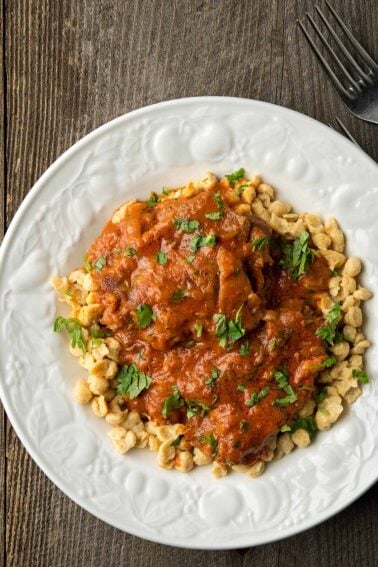
Thanks for the recipe and the clear and thorough instructions. I am making this right now (and have previously used your venison stock recipe from Buck Buck Moose – life changing).
I do have a question: I’ve heard that adding an acid (wine/vinegar) is important to help remove more of the marrow from the bones so that it gets incorporated into the stock. Any thoughts on this (and if I were to do this, suggestions for quantities)?
Kate: I never add acid to broth because it changes the flavor dramatically, not for the better IMHO.
This stock is outstanding, and is a great building block to making other recipes outstanding. It will take your soups, risottos, and sauces to the next level!
I have a hard time finding pig’s feet, but have used chicken feet, pheasant feet, and pork hocks as good substitutes. Roasting the bones is key, and I will typically simmer 12-24 hours before adding the herbs and veggies.
It took me a few years to get there, but I finally have 20 something quarts of this on hand at all times. I am here to tell you, having something of this quality on hand is absolutely priceless. We use it in soups, stews, sauces, and even drink it straight out of a mug like coffee for a collagen boost, or if under the weather, or a bug starts going around, or just for nothing more than shits and giggz.
Can’t wait to make my first stock!
I’ve been saving dove and duck feet. Could that be subbed for the pig foot? Or when would it make sense to use them then?
I used this stock recipe with pheasant, and it turned out delicious. Thanks!
Yup, this is a good and valuable recipe. I make 8-10 quarts at a time and use it for everything. Good work Hank
Can I sub pheasant feet for pigs feet?
Nick: Yes, but you’d need lots of feet to match a pig’s foot. Either way it’ll be fine.
New to your website but not your recipes. Your pheasant stock recommendations/observations/suggestions (pig foot !!!! ) are
outstanding and provided in context.
You have committed follower. Good luck with your post-Amazon
battle.
I sometimes keep the tips of chicken wings and freeze those to add to my stock to increase the collagen feel.
Matt: Excellent idea!
I love this recipe, Hank.
This has really opened up some possibilities for that “once in awhile” bird that seemed to get hit with all of the pellets from my shot, and didn’t have much of anything left for harvestable meat. Now instead of an unusable bird, I drop the whole skinned and dressed carcass into the stockpot.
Do you feel it is necessary to break some of the bones in order to get some of the marrow? Or is just cooking the whole leg bone intact ok?
John: I don’t normally break bird bones for stock. I do saw venison bones, though.
always make pheasant stock. but never use my gizzards or hearts. love to marinate them and grill to medium rare.
Jim: Also a good use!
Question for you, Hank. Why do you only add the vegetables/herbs for the last two hours? Is there a downside to simmering all the ingredients overnight? I tend to store my carcasses and vegetable trimmings in the same bag in my freezer. Thanks for all the great content.
Jay: Yes, there is. The veg/herbs simmered overnight will make the stock taste muddy — not in a bad way, but you lose any sense of, “Oh! There is celery and bay leaves in this stock!” I like that, and the 2 hours simmer keeps those other flavors bright.